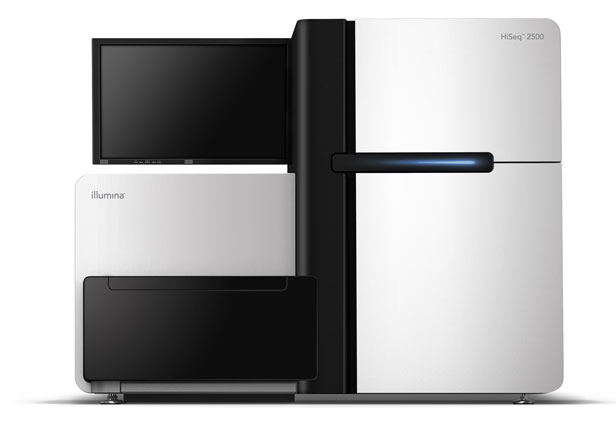Top DNA Sequencing Company Evades Roche’s Takeover

Roche Holding, one of the largest health-care companies in the world, is bidding high for San Diego-based Illumina, manufacturer of the most widely used high-throughput DNA sequencing machines.
Illumina’s shareholders have so far rebuffed Roche’s all-cash offers, which have grown to $6.8 billion in recent weeks, claiming that they underestimate the potential value of the company. Preliminary results from Illumina’s annual shareholder meeting on Wednesday suggest the company isn’t budging: Roche’s attempts to have as many as six of its own nominees elected to the board of directors, which would have given the pharmaceutical giant majority control, were all rejected.
Both sides see personalized medicine as huge areas of opportunity for sequencing technology. Some clinics now use genetic diagnoses to tailor treatments to a patient’s particular needs, especially in oncology. “Cancer is one of the first places where we are already seeing drugs targeted to specific mutations,” says Gail Jarvik, medical geneticist of the University of Washington Medical Center in Seattle. Doctors use high-throughput sequencing to identify mutations in patients’ tumors, which may guide treatments toward drugs that target specific biological anomalies.
Roche already takes advantage of personalized, or “precision,” medicine: its skin-cancer drug zelboraf (vemurafenib), for example, is only given to patients whose tumors carry a specific genetic mutation.
Illumina’s DNA sequencers and other DNA-reading systems are well-suited to perform these sorts of genetic diagnoses. But Roche is not only interested in selling the genetic tests that could also propel sales of its drugs. DNA sequencing can also speed up research and development (R&D can be deep money pit for any pharmaceutical company).
From discovery to development, genetic information “increases the efficiency of creating new drugs,” says Alexis Borisy, biotechnology entrepreneur with Third Rock Ventures investment group. Researchers can develop specific animal models of diseases that mimic the genetic basis in humans. Researchers can also test new drugs in the patients who carry the genetic mutations the drug specifically targets. “An ideal type of drug discovery program is one where you have validating human genetic information about the disease,” says Borisy.
Illumina is not the first sequencing technology to catch Roche’s eye. In 2007, Roche purchased next-generation sequencing company 454 Life Sciences, which produces machines that use a different sequencing technology and garners a smaller market share than Illumina.
Roche says it will not extend its buyout offer past its expiration date on Friday. However, the results of today’s shareholder meeting are unlikely to be the end of the story, says Borisy. The big question is whether it and other large pharmaceutical companies will do better purchasing or partnering with instrument makers like Illumina, as well as clinical sequencing service companies such as Complete Genomics or Foundation Medicine. “What is going to be the most effective strategy? I think those are questions that a lot of people in different companies are asking right now.”
Keep Reading
Most Popular
Large language models can do jaw-dropping things. But nobody knows exactly why.
And that's a problem. Figuring it out is one of the biggest scientific puzzles of our time and a crucial step towards controlling more powerful future models.
The problem with plug-in hybrids? Their drivers.
Plug-in hybrids are often sold as a transition to EVs, but new data from Europe shows we’re still underestimating the emissions they produce.
Google DeepMind’s new generative model makes Super Mario–like games from scratch
Genie learns how to control games by watching hours and hours of video. It could help train next-gen robots too.
How scientists traced a mysterious covid case back to six toilets
When wastewater surveillance turns into a hunt for a single infected individual, the ethics get tricky.
Stay connected
Get the latest updates from
MIT Technology Review
Discover special offers, top stories, upcoming events, and more.